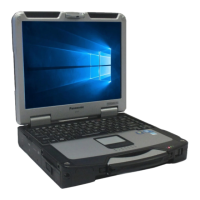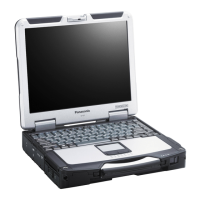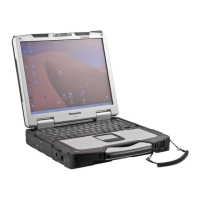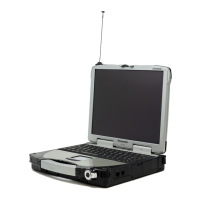16
Sleep or Hibernation Functions
1 Click [start] - [Control Panel] - [Performance and Maintenance] - [Power Options] -
[Advanced].
2 Select [Stand by] or [Hibernate] for [When I close the lid of my portable computer:] /
[When I press the power button on my computer:], and then click [OK].
NOTE
z You do not need to make the setting if you use the Windows menu to enter standby or hibernation.
z Connect the AC adaptor if the computer will be in sleep
*2
for a long period of time. If you cannot use the AC adaptor, use
hibernation instead.
z Using sleep
*2
or hibernation repeatedly may cause malfunction of the computer. To stabilize computer operation, restart
Windows regularly (about once a week) without using sleep
*2
or hibernation.
z Save the necessary data.
z Close files you have opened from removable disks and network drives.
z The password you set in the Setup Utility is not requested at resuming. You can use the Windows password for security in
sleep
*2
or hibernation.
In the default setting, you are requested to enter the Windows password when the computer resumes.
You can use the Windows password for security in standby or hibernation.
A Click [start] - [Control Panel] - [User Accounts], and select the account.
B Click [Create a password] and set the password.
C Click [start] - [Control Panel] - [Performance and Maintenance] - [Power Options] - [Advanced], and add the
check mark in [Prompt for password when computer resumes from standby].
z Do not enter sleep
*2
or hibernation in the conditions below, otherwise the data or file may be corrupted, sleep or hiberna-
tion may not work, or malfunction may occur in the computer or the peripheral devices.
• When any of the hard disk drive indicator or the SD Memory Card indicator is on.
• When playing/recording audio files or displaying motion video such as MPEG files.
• When playing a DVD-Video.
• When writing to a disc.
Precautions

